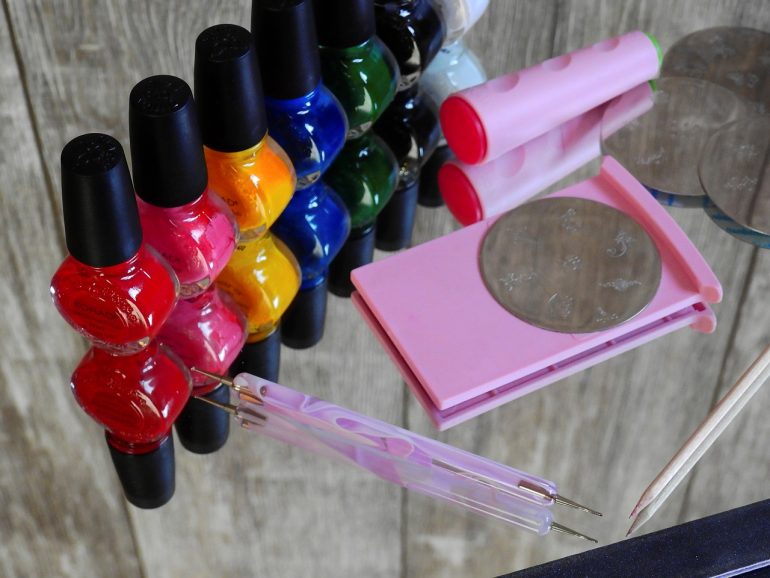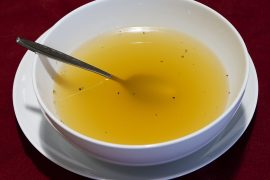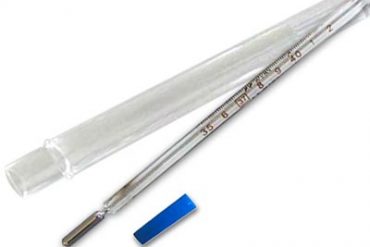Some people view getting a manicure or doing their own nails at home as a relaxing and creative form of self-expression. Sadly it is not as harmless as you think. You may think that because you are using so little, the risk is minimal. A study done by Duke University and EWG show that isn’t the case.
The study by Duke University and the Environmental Working Group shares that even though polish is applied to the fingernail our bodies still absorb hormone disrupting chemicals every time we use conventional nail polish. In particular, the study mentions triphenyl phosphate (TPHP) an endocrine disrupting chemical that is commonly used in nail polish. The chemical was found in test subjects bodies within 10-14 hours of application. In addition diphenyl phosphate (DPHP) a metabolite of TPHP had increased in test subjects bodies sevenfold.
Consumers and Technicians
Consumers increase their risk for multiple chemical exposures by going to nail salons, where there may be multiple workstations and the risk for exposure is increased. It is however nail technicians who have the greatest risk, since they are exposed to these chemicals on a consistent daily basis.

Ten common nail polish ingredients to avoid
Personally I don’t believe nail polish is worth the risk, but if you simply cannot give up your nail polish then be sure to read labels and avoid these ten chemicals at all costs.
Butyl or ethyl acetate-This is toxic when inhaled, as well as being highly flammable. According to the MSDS this chemical can be seriously damaging to internal organs in the case of repeated or prolonged exposure.
Camphor–This toxic ingredient is poisonous, can add to body toxicity, cause seizures and nervousness/irritability.
Dibutyl phthalate (DBP)– This received a poor rating with EWG, which lists it as a high hazard. They also state that it can cause endocrine disruption and organ system toxicity. This chemical was also banned in Europe, due to its known effect of reproductive problems.
Formaldehyde (or derivatives)- While these may not be as much as they were in the past, many manufacturers still use this chemical. A known carcinogen, it also can cause allergic reactions, skin rashes and irritations
Nitrocellulose–While EWG rates this as low risk, it does state moderate concerns about organ toxicity. This is actually used in car paint, as well as dynamite and fireworks.
Parabens-This chemical acts as a preservative. There are a wide variety of parabens, none of which should be used since they are linked to cancer.
Toluene-Toluene is a noxious chemical used in nail polish, base coats and topcoats to help the polish stay on the nail. Toluene is included in a list of hazardous chemicals cited in a 1987 California law. Exposure can result in headaches, dizziness and cracked skin, as well as more serious effects such as reproductive damage and respiratory complications. The CDC also warns it can cause central nervous system damage.
TPHP– This chemical allows polish to be more durable. As stated previously it is an endocrine disruptor, and is known to cause developmental and reproductive problems in animals.
Xylene-This is very irritating to the skin, eyes and respiratory system. This chemical also effects the central nervous system with symptoms such as headaches, dizziness and tremors. According to its MSDS sheet, xylene is toxic to blood, kidneys, the nervous system, liver. Repeated or prolonged exposure to the substance can produce target organs damage.
Ethyl tosylamide-Europe has banned this product due to its antibacterial properties and concern over antibiotic resistance.
Nail polish hints and alternative options
Look for nail polish with all the ingredients listed on the label.
Check company websites for a complete list of ingredients and any additional information.
Avoid nail salons and do your nails at home to minimize chemical exposures.
Know what you are buying. Many companies are making labels that are 3, 5, 7, 8 or 9 free. The chemicals they are eliminating vary from company to company, so it’s important to read labels. I’ve given two examples of 7 free labels, so you can see the differences. Some examples include:
3 free labels-Free of: Formaldehyde, toluene, DBP
5 free labels-Free of: Formaldehyde, toluene, DBP, formaldehyde resin, and camphor.
7 free labels-Free of: Formaldehyde, toluene, DBP, formaldehyde resin, camphor, TPHP and xylene.
7 free labels-Free of: Formaldehyde, toluene, DBP, formaldehyde resin, camphor, xylene, and parabens.
8 free labels-Free of: Formaldehyde, toluene, DBP, formaldehyde resin, camphor, xylene, ethyl tosylamide, and triphenyl phosphate.
9 free labels-Free of: Formaldehyde, toluene, DBP, formaldehyde resin, camphor, xylene, ethyl tosylamide, parabens, and acetone.
How does your nail polish rate? Check out the Skindeep database to find out.
Additional references
Nail Polish Doubles as Furniture Flame Retardant
Duke-EWG Study Finds Toxic Nail Polish Chemical In Women’s Bodies








